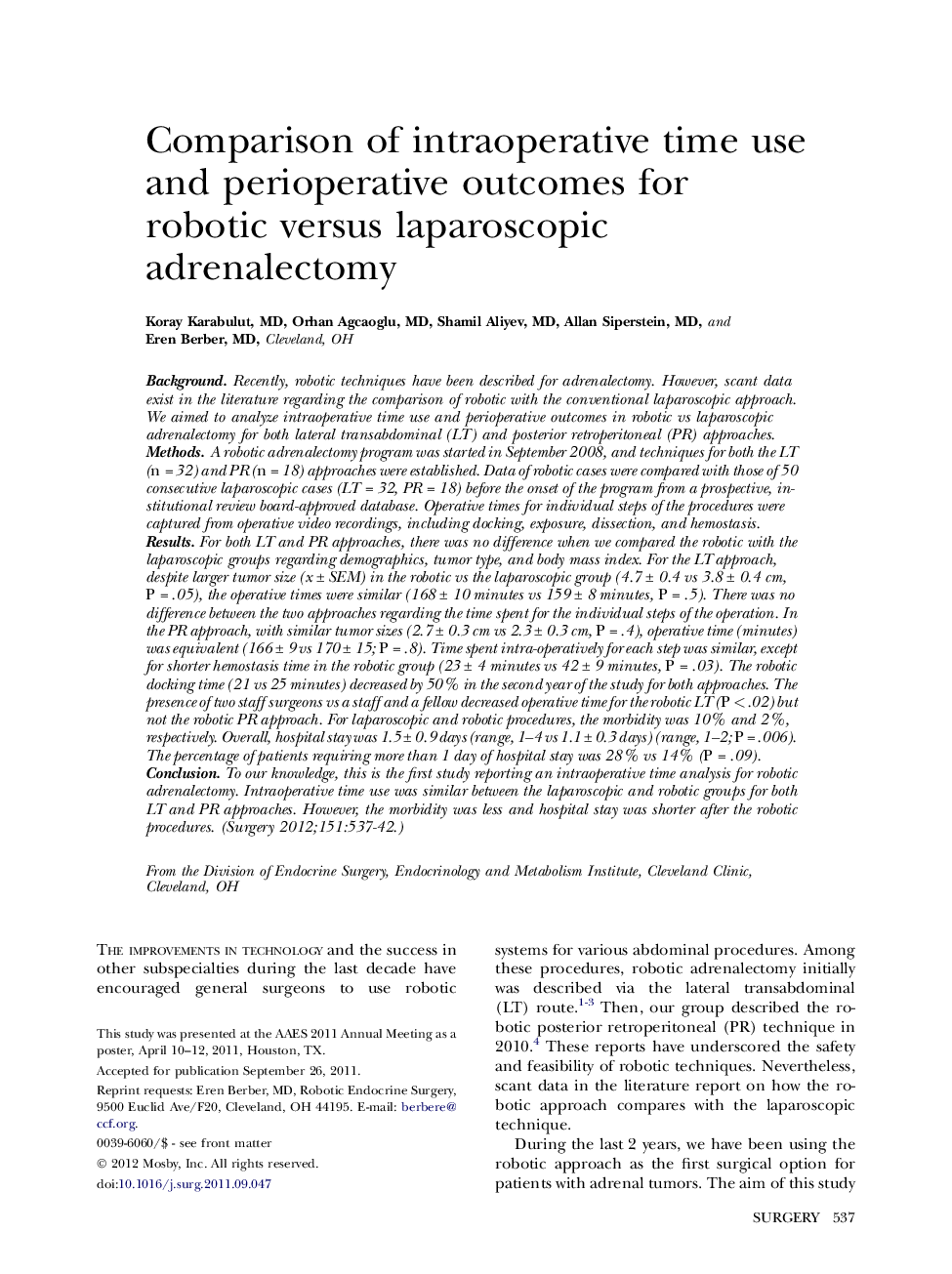| کد مقاله | کد نشریه | سال انتشار | مقاله انگلیسی | نسخه تمام متن |
|---|---|---|---|---|
| 4308084 | 1289269 | 2012 | 6 صفحه PDF | دانلود رایگان |

BackgroundRecently, robotic techniques have been described for adrenalectomy. However, scant data exist in the literature regarding the comparison of robotic with the conventional laparoscopic approach. We aimed to analyze intraoperative time use and perioperative outcomes in robotic vs laparoscopic adrenalectomy for both lateral transabdominal (LT) and posterior retroperitoneal (PR) approaches.MethodsA robotic adrenalectomy program was started in September 2008, and techniques for both the LT (n = 32) and PR (n = 18) approaches were established. Data of robotic cases were compared with those of 50 consecutive laparoscopic cases (LT = 32, PR = 18) before the onset of the program from a prospective, institutional review board-approved database. Operative times for individual steps of the procedures were captured from operative video recordings, including docking, exposure, dissection, and hemostasis.ResultsFor both LT and PR approaches, there was no difference when we compared the robotic with the laparoscopic groups regarding demographics, tumor type, and body mass index. For the LT approach, despite larger tumor size (x ± SEM) in the robotic vs the laparoscopic group (4.7 ± 0.4 vs 3.8 ± 0.4 cm, P = .05), the operative times were similar (168 ± 10 minutes vs 159 ± 8 minutes, P = .5). There was no difference between the two approaches regarding the time spent for the individual steps of the operation. In the PR approach, with similar tumor sizes (2.7 ± 0.3 cm vs 2.3 ± 0.3 cm, P = .4), operative time (minutes) was equivalent (166 ± 9 vs 170 ± 15; P = .8). Time spent intra-operatively for each step was similar, except for shorter hemostasis time in the robotic group (23 ± 4 minutes vs 42 ± 9 minutes, P = .03). The robotic docking time (21 vs 25 minutes) decreased by 50% in the second year of the study for both approaches. The presence of two staff surgeons vs a staff and a fellow decreased operative time for the robotic LT (P < .02) but not the robotic PR approach. For laparoscopic and robotic procedures, the morbidity was 10% and 2%, respectively. Overall, hospital stay was 1.5 ± 0.9 days (range, 1–4 vs 1.1 ± 0.3 days) (range, 1–2; P = .006). The percentage of patients requiring more than 1 day of hospital stay was 28% vs 14% (P = .09).ConclusionTo our knowledge, this is the first study reporting an intraoperative time analysis for robotic adrenalectomy. Intraoperative time use was similar between the laparoscopic and robotic groups for both LT and PR approaches. However, the morbidity was less and hospital stay was shorter after the robotic procedures.
Journal: Surgery - Volume 151, Issue 4, April 2012, Pages 537–542